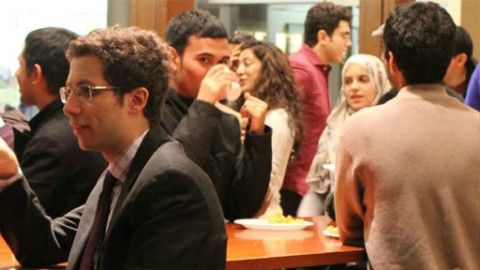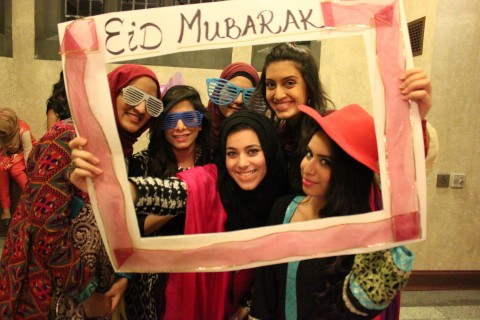The truth about Muslims in America
The history of American Muslims goes back more than 400 years. Although some evidence suggests that there were Muslims on Columbus' ships, the first clearly documented arrival of Muslims in America occurred in the 17th century with the arrival of slaves from Africa. Scholars estimate that anywhere from a quarter to a third of the enslaved Africans brought to the United States were Muslims. Large numbers of Moriscos (former Muslims of Spain and Portugal) also came to the Spanish colonies, including many areas of what is today the United States. Although enslaved people were denied freedom of religion, many did practice their faith in secret and pass it on to their children. There are several autobiographies of Muslim slaves that survive from this period, including some by individuals who were involved in the Abolitionist movement and were Union soldiers during the Civil War.
The next significant wave of Muslim immigrants began in the mid-19th century. During the late 19th century until the 1920s, large numbers of Arabs, mostly from Lebanon and Greater Syria, arrived in the United States. Although the majority of these immigrants (almost 90%) were Arab Christians, there were sizable clusters of Muslims, most of whom settled in the Midwest. Mohammed Alexander Russell Webb, an early American convert to Islam, established a mosque and mission in New York City in 1893. The first mosque structure built in the United States for the purpose of serving a Muslim community was in Ross, North Dakota (1929) and the oldest surviving mosque is in Cedar Rapids, Iowa (1934).
African-Americans began to rediscover their African Islamic roots after the Great Migration of Blacks from the South to the Northern cities after World Wars I and II. The re-emergence of African-American Islam has been a consistent phenomenon during the twentieth century until the present. Today, African-American Muslims constitute roughly a third of the American Muslim population.
After passage of the Immigration and Nationality Act of 1965, greater numbers of Muslims began migrating to America along with many other immigrants with diverse backgrounds. The change in immigration laws allowed highly-skilled professionals to enter the U.S. Many Muslims who came during this time period were from the Middle East and South Asia (India, Pakistan and Bangladesh).
Who are American Muslims today?
American Muslims in the United States 6. When did Muslims come to America? The history of American Muslims goes back more than 400 years. Although some evidence suggests that there were Muslims on Columbus' ships, the first clearly documented arrival of Muslims in America occurred in the 17th century with the arrival of slaves from Africa. Scholars estimate that anywhere from a quarter to a third of the enslaved Africans brought to the United States were Muslims. Large numbers of Moriscos (former Muslims of Spain and Portugal) also came to the Spanish colonies, including many areas of what is today the United States. Although enslaved people were denied freedom of religion, many did practice their faith in secret and pass it on to their children. There are several autobiographies of Muslim slaves that survive from this period, including some by individuals who were involved in the Abolitionist movement and were Union soldiers during the Civil War.
The next significant wave of Muslim immigrants began in the mid-19th century. During the late 19th century until the 1920s, large numbers of Arabs, mostly from Lebanon and Greater Syria, arrived in the United States. Although the majority of these immigrants (almost 90%) were Arab Christians, there were sizable clusters of Muslims, most of whom settled in the Midwest. Mohammed Alexander Russell Webb, an early American convert to Islam, established a mosque and mission in New York City in 1893. The first mosque structure built in the United States for the purpose of serving a Muslim community was in Ross, North Dakota (1929) and the oldest surviving mosque is in Cedar Rapids, Iowa (1934). African-Americans began to rediscover their African Islamic roots after the Great Migration of Blacks from the South to the Northern cities after World Wars I and II.
The re-emergence of African-American Islam has been a consistent phenomenon during the twentieth century until the present. Today, African-American Muslims constitute roughly a third of the American Muslim population. After passage of the Immigration and Nationality Act of 1965, greater numbers of Muslims began migrating to America along with many other immigrants with diverse backgrounds. The change in immigration laws allowed highly-skilled professionals to enter the U.S. Many Muslims who came during this time period were from the Middle East and South Asia (India, Pakistan and Bangladesh). 7. Who are American Muslims today? America is home to one of the most diverse Muslim populations in the world, including people of almost every ethnicity, country and school of thought. Although they are widely viewed as recent immigrants, the demographics tell a different story. Approximately one third of the community is African-American, one third is of South Asian descent, one quarter is of Arab descent, and the rest are from all over the world, including a growing Latino Muslim population.
While exact numbers are difficult to establish, there are between 3-6 million American Muslims. About one half of this population was born in the U.S., a percentage that continues to grow as immigration slows and younger individuals start having families. Like others, most Muslims who choose to migrate to America arrive seeking economic opportunity and democratic freedom. The best studies available characterize American Muslims today as largely middle-class and an integral part of American society.1 American Muslims are present in all walks of life, as doctors and taxi drivers; lawyers and newspaper vendors; accountants, homemakers, academics, media personalities, athletes and entertainers. Although American Muslims make up approximately one percent of the U.S. population, most Americans can name several famous American Muslims.
Names like Muhammad Ali, Malcolm X, Mos Def, Fareed Zakaria, Shaquille O'Neal, Lupe Fiasco, Dr. Oz and Rima Fakih are part of our popular consciousness. Important business figures like Farooq Kathwari (CEO of Ethan Allen), Malik M. Hasan (a pioneer in the field of HMOs), and Safi Qureshey (a leader in PC component manufacturing) are all American Muslims. Many American Muslims are also civically engaged, working with their neighbors to better their communities. Well-known American Muslim leaders include Rep. Keith Ellison (DFL-Minn.), the first American Muslim to be elected to the U.S. Congress; Rep. André Carson (D-Ind.); Mohammed Hameeduddin (Mayor, Teaneck, N.J.); and Amer Ahmad (Comptroller, Chicago). The nation has honored many American Muslims for their service and sacrifice, including, for example, Salman Hamdani, a first responder on 9/11, and Kareem Rashad Sultan Khan, recipient of the Bronze Star and Purple Heart who died while serving in Operation Iraqi Freedom.
Gummi bears caramels donut carrot cake carrot cake chupa chups bonbon tootsie roll.
Gummi bears caramels donut carrot cake carrot cake chupa chups bonbon tootsie roll.
Gummi bears caramels donut carrot cake carrot cake chupa chups bonbon tootsie roll.
When you subscribe to the blog, we will send you an e-mail when there are new updates on the site so you wouldn't miss them.





